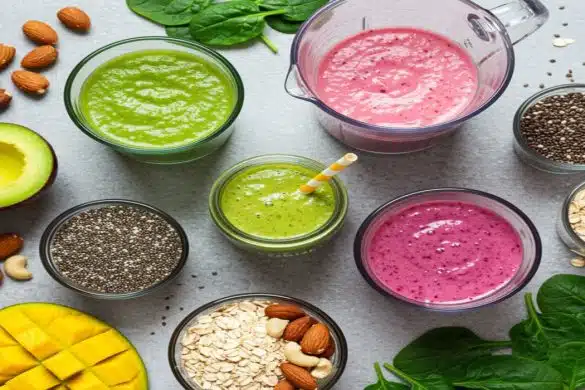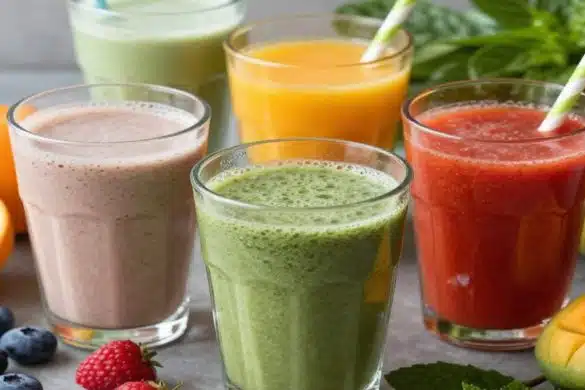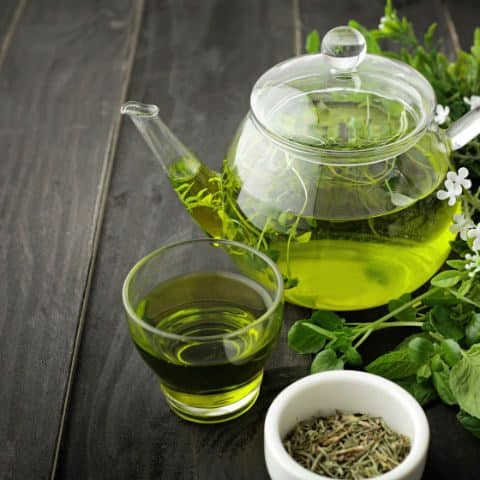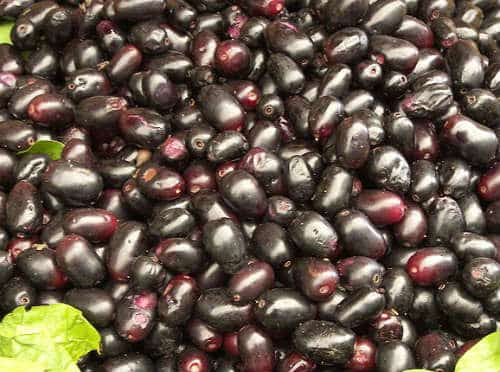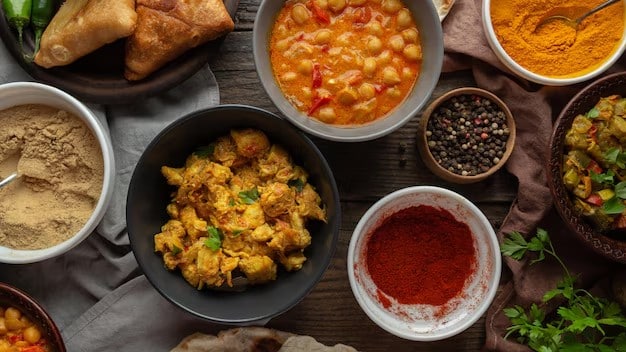Key Highlights
- Fat is an essential nutrient that provides energy, supports vitamin absorption (A, D, E, K), maintains cell structure, and aids hormone regulation
- Saturated fat is solid at room temperature and found in ghee, butter, coconut oil, and full-fat dairy, and should make up less than 10% of daily calories according to ICMR
- Monounsaturated fat is a healthy fat found in olive oil, groundnut oil, sesame oil, and nuts, and helps reduce LDL cholesterol levels.
- Polyunsaturated fat includes omega-3 and omega-6 fats found in sunflower oil, flaxseeds, walnuts, and fatty fish, supporting heart, brain, and overall health
- Eating dietary fat does not automatically lead to body fat gain, so portion control and fat quality are important
- Use 1–1.5 teaspoons of oil per serving, limit nuts to 8–10 pieces per day, include fatty fish 2–3 times a week, and prefer homemade snacks over deep-fried foods
- Focus on unsaturated fats, moderate saturated fats, avoid trans fats, and include fats mindfully in meals for overall wellness
Many people are unsure about dietary fats and their role in the body. This can lead to unnecessary fear or avoiding foods that provide essential nutrients and support overall health.
The confusion grows because terms like saturated fat, trans fat, cholesterol, and healthy fats are rarely explained in simple, practical language. Understanding them clearly can help you make better daily food choices, improve heart health, and enjoy meals without guilt or guesswork.
This blog breaks down dietary fats in an easy, Indian-context format. The goal is to help you understand each type of fat, how much you need, and how to choose healthier options for long-term wellbeing.
What Is Dietary Fat and Why Does Your Body Need It?
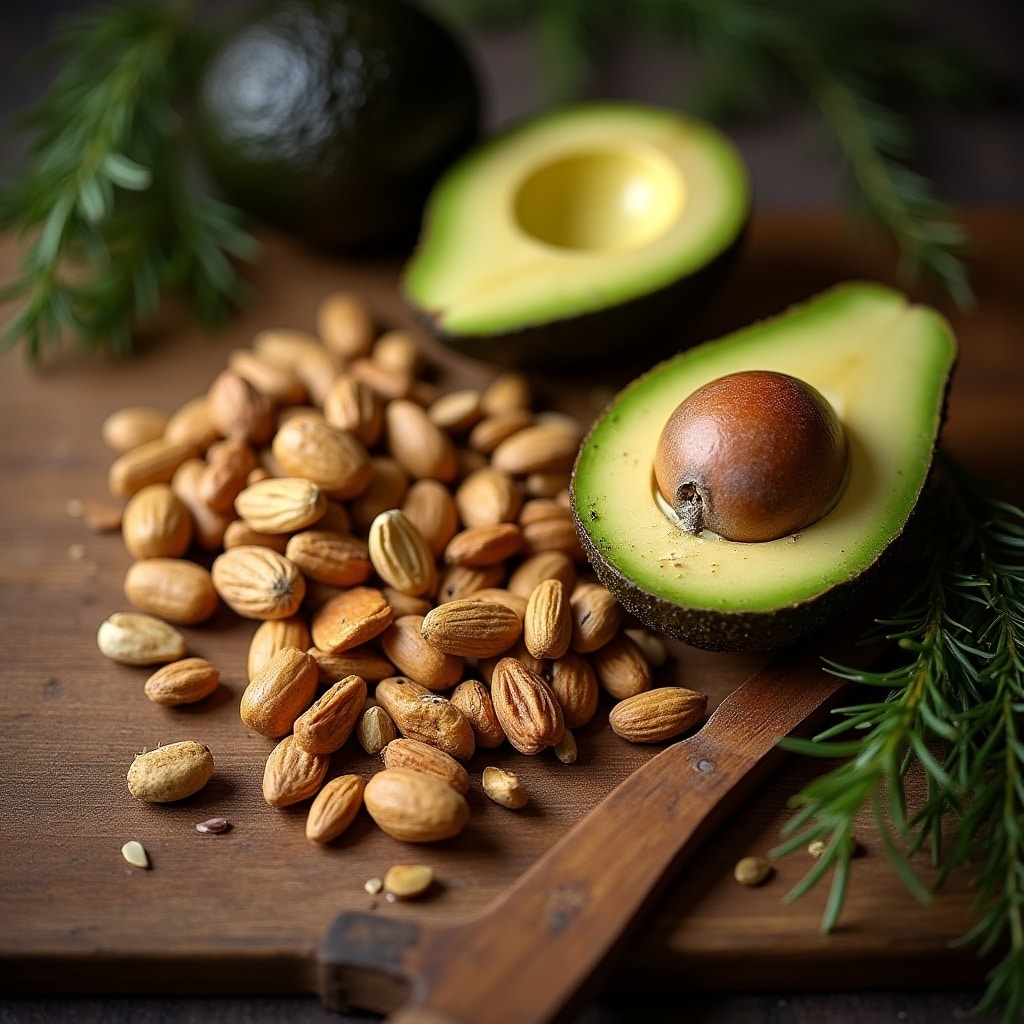
Dietary fats
Dietary fats are nutrients found in the foods you eat that provide your body with energy and essential functions. They are one of the three major macronutrients, along with carbohydrates and proteins.
Now that we understand why fat is essential for our body, let’s take a closer look at what dietary fats actually are and the different types you should include in your diet:
- Energy Source: Provides a concentrated source of energy, used when the body needs steady fuel, such as during long hours without food or physical activities like cooking, traveling, or exercising.
- Vitamin Absorption: Aids in absorbing fat-soluble vitamins A, D, E, and K, enhancing nutrient uptake from foods like lentils and leafy greens.
- Hormone Regulation: Supports the production and balance of important hormones.
- Organ Protection: Cushions and protects vital organs in the body.
- Cell Structure: Helps maintain healthy cell membranes.
- Supports Healthy Diet: Unsaturated fats from foods like nuts, seeds, and certain oils contribute to overall nutrition when consumed mindfully.
What Are the Different Types of Dietary Fats?
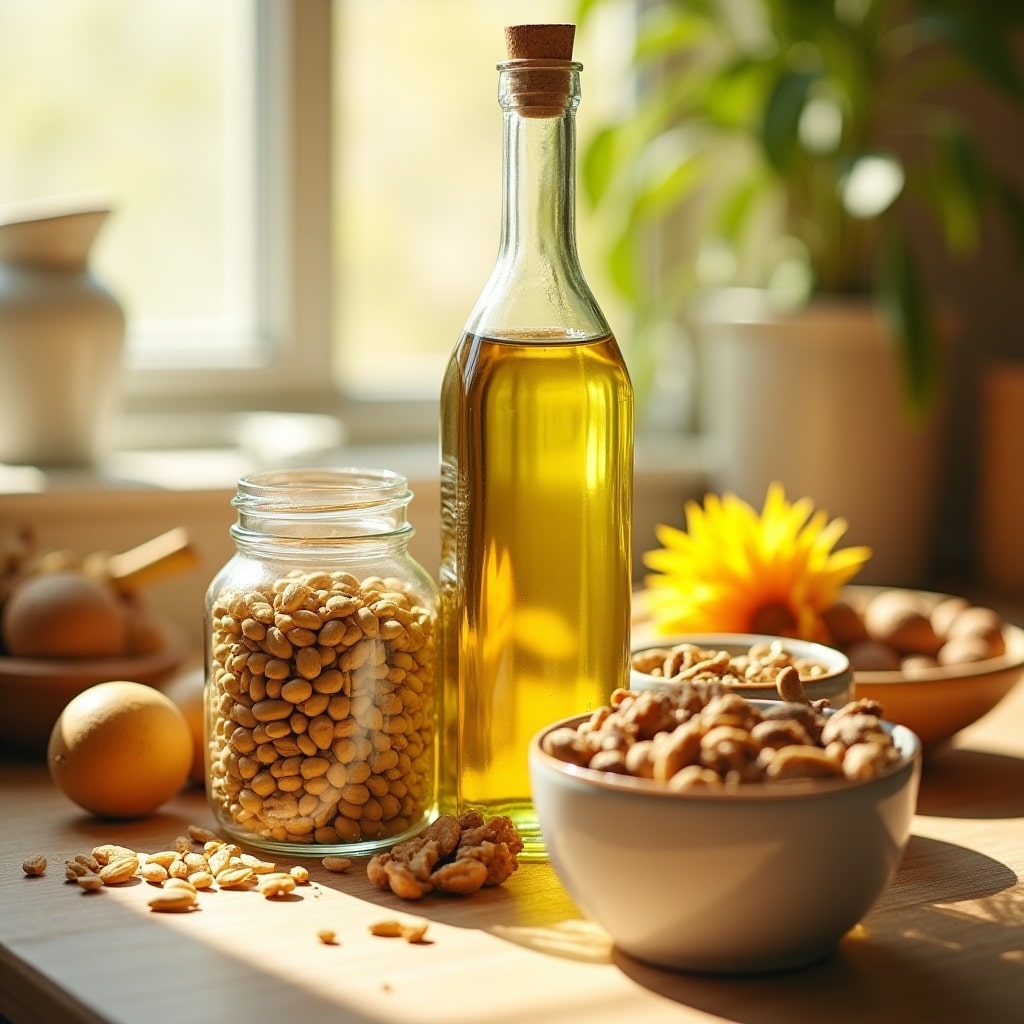
Image highlighting monounsaturated fats like olive and peanut oil and polyunsaturated fats like sunflower oil flaxseeds and walnuts
To understand your daily dietary choices, you first need to know the major categories of fats. Every meal you prepare, whether it is upma, sambar, paneer butter masala, or chicken curry, contains some form of dietary fat that influences flavour, texture, and nutrition.
Below, we look at each category to help you understand which fats to limit and which ones can support healthier meals like khichdi, idli podi, biryani, or even simple roti sabzi.
What Is Saturated Fat?
Saturated fat is a type of dietary fat that stays solid at room temperature. It is commonly found in foods made with ghee, butter, coconut oil, full-fat dairy, and certain meats. In many Indian dishes like aloo paratha, pongal, ghee rice, or paneer curry, small amounts of saturated fat are naturally present.
According to the World Health Organization (WHO), saturated fat should make up less than 10% of total daily energy intake, as excessive consumption can raise LDL (bad) cholesterol and increase the risk of heart disease. However, moderate use of traditional fats, for example, a small spoon of ghee on dal or coconut oil in Kerala-style avial, can fit into a balanced diet, especially when combined with healthier unsaturated fats.
What Is Trans Fat and Why Is It Harmful?
Trans fat is a type of dietary fat formed when oils are hydrogenated to make them solid and long-lasting. Unlike natural fats, trans fats are considered bad dietary fats because they raise LDL (bad) cholesterol and lower HDL (good) cholesterol, increasing heart disease risk.
In India, trans fats are most commonly found in vanaspati, deep-fried bakery items, and packaged or processed snacks like namkeen mixtures, biscuits, puffs, bhujia, and certain street-style samosas and pakodas fried in reused oil. These foods may taste tempting, but offer little nutrition and significantly harm your dietary fat and cholesterol balance.
What Are Unsaturated Fats?
Unsaturated fats are the healthier counterparts in the saturated and unsaturated fats comparison. They help reduce LDL cholesterol, support heart health, and provide essential fatty acids your body cannot make on its own.
These fats are commonly found in foods like groundnut oil, sunflower oil, til oil, avocados, almonds, walnuts, and fish-based dishes such as meen curry or grilled pomfret. Including more unsaturated fats in your everyday meals, whether drizzling olive oil over salads, using mustard oil for Bengali curries, or adding flaxseeds to upma, supports healthier cooking without compromising flavour.
To understand them better, here’s a quick breakdown of the two main kinds of unsaturated fats:
- Monounsaturated Fats
- Polyunsaturated Fats
Let’s explore the two main types of healthy fats and understand their sources, benefits, and role in a balanced diet:
| Feature | Monounsaturated Fat | Polyunsaturated Fat |
| Type | Healthy unsaturated fat | Healthy unsaturated fat |
| State at Room Temperature | Liquid | Liquid |
| Health Benefits | Helps reduce LDL (bad) cholesterol; supports heart health | Supports heart health, brain function, and reduces inflammation; essential fat (the body cannot produce) |
| Common Indian Sources | Olive oil, groundnut (peanut) oil, sesame oil, almonds, peanuts | Sunflower oil, safflower (kardi) oil, flaxseeds (alsi), walnuts, and certain fish |
| Usage | Good for everyday cooking | Recommended for a heart-friendly diet |
How Does Dietary Fat Affect Cholesterol and Heart Health?
Dietary fat plays a significant role in shaping your overall cholesterol levels, which directly influences heart health. When discussing dietary fat and cholesterol, it’s important to understand the two main types of cholesterol:
- LDL (Low-Density Lipoprotein): Often called “bad” cholesterol because high levels can clog arteries and increase the risk of cardiovascular diseases.
- HDL (High-Density Lipoprotein): Known as “good” cholesterol because it helps remove excess cholesterol from the bloodstream.
Different types of fats affect these cholesterol levels differently. Saturated fat and trans fat can increase LDL, raising the risk of heart disease. These fats are common in ghee-heavy foods, deep-fried snacks, and packaged items made with vanaspati.
On the other hand, unsaturated fats, found in foods like fish, nuts, seeds, and oils such as olive, mustard, and groundnut, can help increase HDL cholesterol and support better heart health.
How Do Dietary Fat and Body Fat Differ?
Before understanding how fats support overall health, it’s important to answer the question: What is fat? Many people assume that eating fat automatically leads to gaining body fat, but the truth is more nuanced.
This table sets the stage for examining the real difference between dietary fat and body fat.
| Aspect | Dietary Fat | Body Fat (Stored Fat) |
| What it is | Fat consumed through food | Fat stored in the body as energy |
| Main purpose | Energy, nutrient absorption, hormone production | Long-term energy reserve |
| Source | Oils, nuts, dairy, seeds, fatty fish | Excess calories from any food |
| Does it cause weight gain? | Only when overall calories exceed needs | Yes, it increases when surplus calories occur |
What Are the Best Healthy Fats to Include in Your Diet?
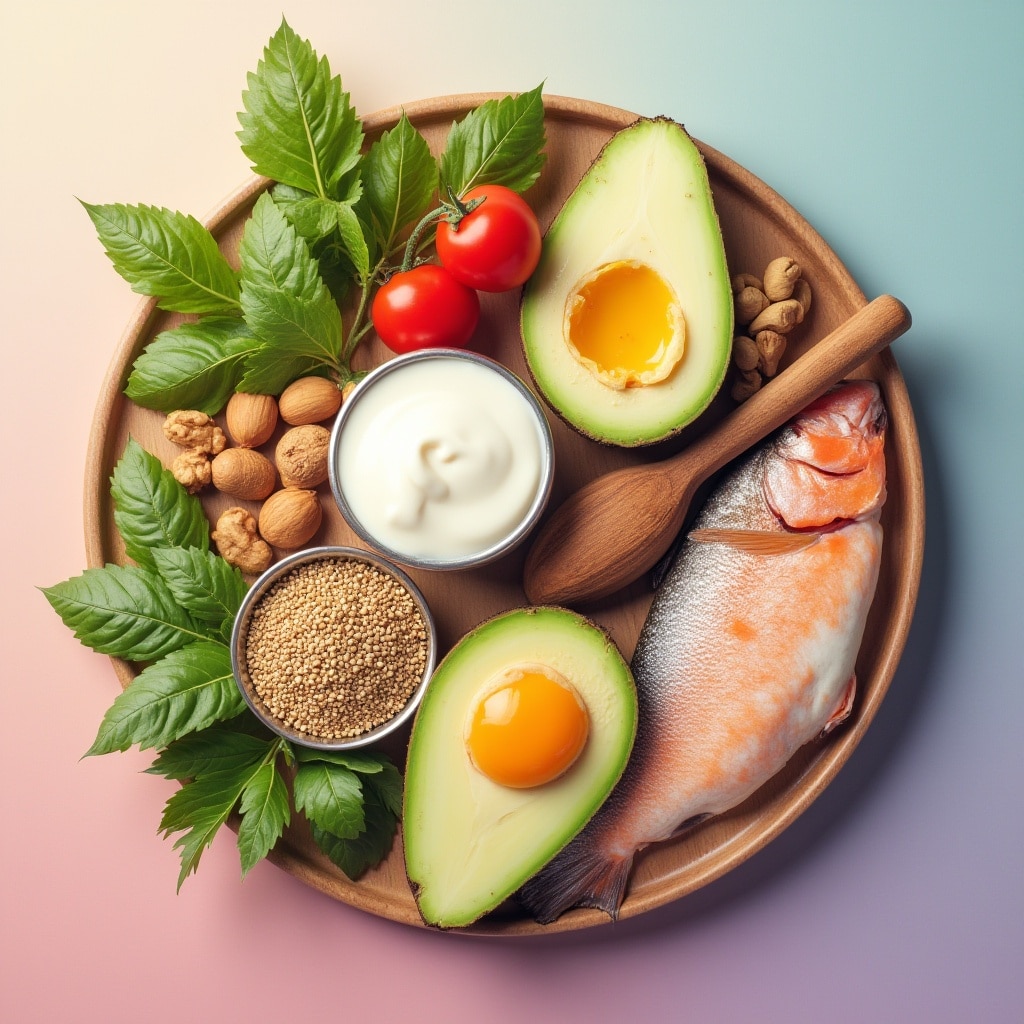
healthy fats for a balanced diet
Healthy fats are essential for balanced nutrition, but many people remain unsure which options actually support long-term health. Before choosing the right ingredients for cooking, it helps to understand which fats offer real benefits and how they fit into everyday Indian meals.
1. Plant-Based Sources of Healthy Fats
- Olive oil for salads and light sautéing
- Groundnut oil for sabzis and stir-fries
- Sesame oil for Tamil and Andhra dishes
- Flaxseeds (as chutney powder or sprinkled on porridge)
- Chia seeds in smoothies and curd
- Walnuts in oats, kheer, or mixed nuts
- Almonds, cashews, and pistachios as snacks or toppings
- Avocado in sandwiches or salads
2. Animal Sources of Healthy Fats
- Fatty fish like salmon, mackerel (bangda), sardines
- Eggs in omelettes or bhurji
- Curd in meals such as curd rice
- Paneer in dishes like paneer bhurji
- Whole milk as part of a healthy diet
How Much Dietary Fat Should You Eat and How Can You Control Portions?
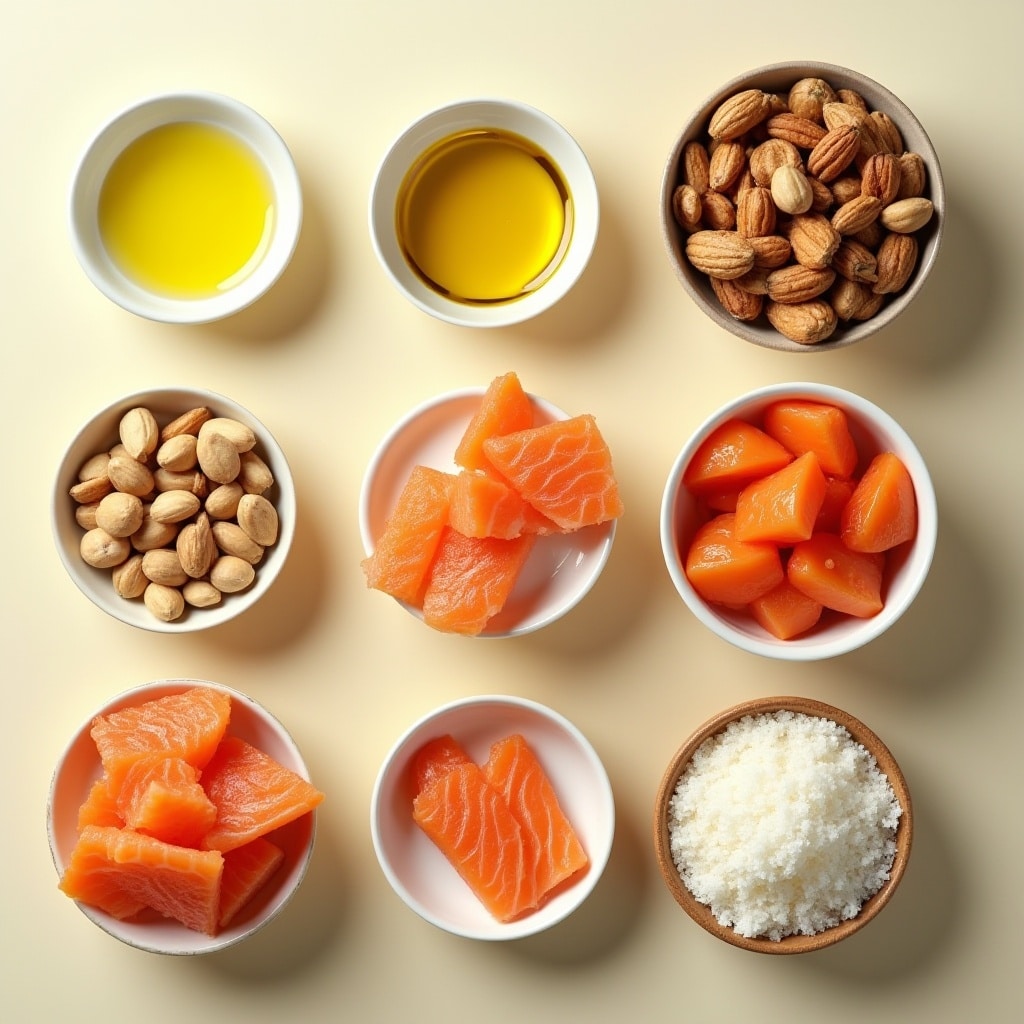
healthy portion control of dietary fats
According to the Indian Council of Medical Research (ICMR), dietary guidelines for saturated fat, saturated fats should make up less than 10% of your daily calories to reduce the risk of heart disease.
To keep your saturated fat intake below 10% of daily calories, here are some simple and effective portion-control tips:
- Cooking oils: Use 1–1.5 teaspoons of oil per serving of sabzi or dal, preferably unsaturated oils like groundnut, sunflower, or olive oil.
- Nuts: Limit to 8–10 pieces per day.
- Fatty fish: Include 2–3 times a week for heart-healthy omega-3s.
- Snacks: Prefer homemade options like roasted chana or peanut chikki over deep-fried foods.
- High-saturated-fat foods: Reduce butter, ghee, and fatty cuts of meat, focusing on healthier fat sources.
Balancing overall fat intake supports heart health, nutrient absorption, and long-term wellness.
How Can You Reduce Bad Fats and Improve Your Fat Choices?
Here are simple, practical steps to lower bad dietary fats and make healthier choices:
- Replace vanaspati with cold-pressed oils like groundnut, sesame, mustard, or olive oil.
- Cut down on deep-fried foods; choose steaming, grilling, sautéing, or air-frying instead.
- Read labels carefully to avoid hidden trans fat listed as “hydrogenated” or “partially hydrogenated” oils.
- Choose whole foods over packaged snacks, which often contain bad dietary fats.
- Use portion control even with healthier oils to manage overall fat intake.
Conclusion
Understanding what are dietary fat, the different types, and how they function in your body empowers you to make smarter, healthier food choices every day. Not all fats are harmful; many are essential for energy, nutrient absorption, and overall well-being.
By choosing healthier oils, limiting bad dietary fats, and following balanced guidelines, you can support heart health without giving up the richness of Indian cuisine. With mindful swaps and portion control, dietary fats become a helpful ally rather than something to fear.
Frequently Asked Questions
What foods are good sources of healthy fats?
Healthy fats come from nuts, seeds, avocados, oily fish, and oils like olive, groundnut, and sesame. These foods support heart health, provide energy, and can be included in balanced Indian meals daily.
What role do dietary fats play in nutrition and energy?
Dietary fats supply long-lasting energy, support vitamin absorption, maintain cell structure, and help hormone production. They also improve satiety, keeping you full longer and supporting overall nutritional balance in everyday Indian diets.
How much dietary fat should I consume in a balanced diet?
Most adults should get around 20–30% of daily calories from fats, with limited saturated fat. Portion control and choosing healthier sources ensure balance without increasing health risks.
Should people with diabetes watch their dietary fat intake?
Yes. People with diabetes should monitor fat intake to protect heart health, prioritise unsaturated fats and limiting saturated and trans fats. This helps maintain better blood cholesterol levels and supports overall metabolic control.
What kind of food should I eat that’s high in fat?
Choose high-fat foods like nuts, seeds, avocados, coconut, fatty fish, and healthy oils. These provide energy and essential nutrients, unlike deep-fried snacks or processed foods high in unhealthy fats.
Is there such a thing as a high-fat diet?
Yes. High-fat diets like ketogenic or low-carb models exist, emphasising fat over carbs. They require careful planning to ensure fats come from healthy sources and meet individual health needs.
How can I tell if a food is high in fat or saturated fat?
Read nutrition food labels for total fat, saturated fat, and trans fat. Foods rich in butter, cream, vanaspati, or deep-fried items usually contain higher saturated or unhealthy fats.
What are alternatives to replace saturated fats in the foods I eat?
Replace butter and vanaspati with olive, sesame, or groundnut oil. Use nuts, seeds, and avocado spreads instead of heavy creams. These swaps reduce too much saturated fat and support better heart health.

